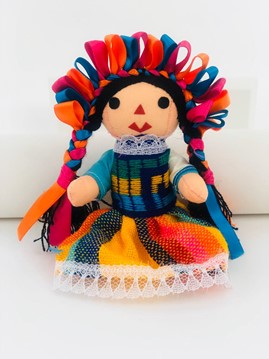

The María doll is a traditional craft practice in Mexico that preserves the magic and humility of Mazahua women.
These rag dolls originate from Michoacán and the State of Mexico. They were made as an alternative to the toys sold in the markets, mainly porcelain dolls imported from Spain, by the Mazahua ethnic group.
Although they are currently made of cloth and colored ribbons, it is believed that the first ones were made with clay, palm, and corn hair. Tradition says that these dolls accompanied children's burial rituals to protect children from evil spirits.

This traditional Mexican doll is called that because it represents the Mazahua women, who walked the streets with their emblematic colored ribbons in their hair and typical clothing of the region.
Currently, the creation of dolls is encouraged without the need for machines or glue, as in their origin they were made embroidery by embroidery, thread by thread by the Mazahua women. Maria or Lupita? The Lupita doll emerged in Guanajuato, as a variant of the María doll, made with cardboard technique, painted with floral outfits and geometric figures.
In the north of Mexico, dressed in a bright suit and flowered fabrics, the Guarijío dolls also emerged, with lace applications, scarves and even black socks.
At Central Hoteles we celebrate Mexican tradition!